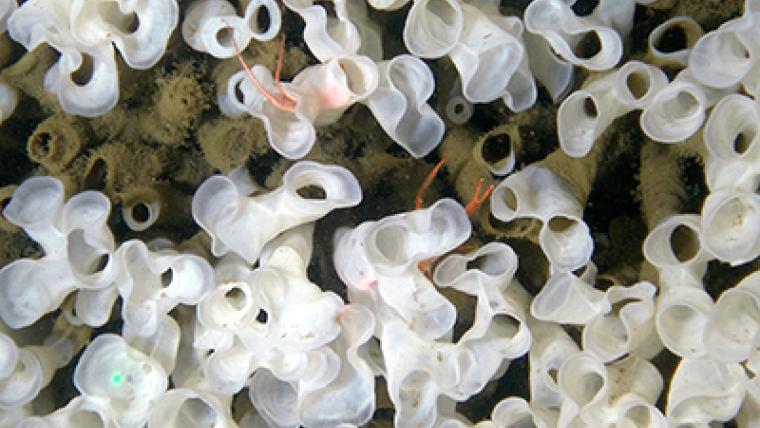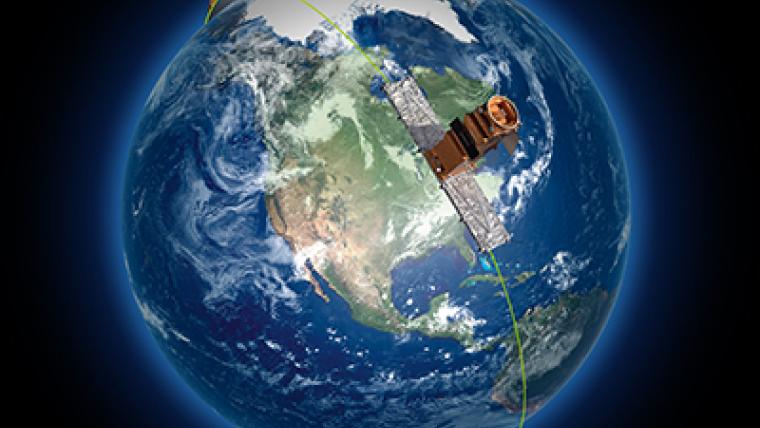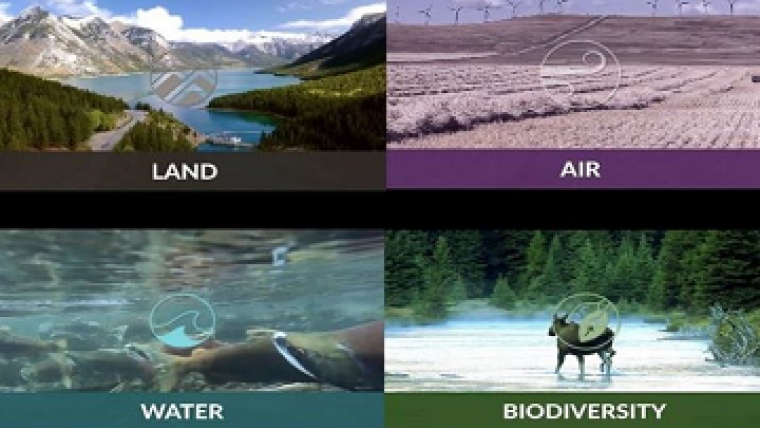Learning from Tragedy – The 1929 Tsunami (Ask NRCan)
Marine geoscientist Calvin Campbell joins us to talk about the importance of a specific underwater landslide that caused a massive tsunami in Newfoundland back in 1929. Calvin is part of a team studying this historical landslide, and shares with us recent findings that changed our perception of the event.
Transcript
Joel Houle:
Welcome, everyone, to a special episode of Ask NRCan. I’m your host, Joel Houle, and this is our podcast series where we talk to our experts about the work that they do here at Natural Resources Canada.
If you’re a loyal listener, you might remember our conversation with research scientist Alexandre Normandeau back in episode 12, when we discussed his work studying underwater landslides. Today, we’re meeting with one of Alexandre’s colleagues to talk about the importance of a specific landslide that caused a massive tsunami in Newfoundland back in 1929. If you’re listening to this episode on November 18th, you might be interested to know that today is the ninetieth anniversary of that tsunami.
For those of you who are new to the show, we call this series Ask NRCan because we want to hear from you. At the end of the episode if you have any questions on today’s topic, just head over to Twitter and tweet at us using the hashtag “AskNRCan”. Our experts will do their best to answer all your questions. Also, if you happen to be on Twitter anyway, you might as well start following me at @JoelScience. I share some interesting info about our podcasts, as well as other cool science stuff. We release an episode of Ask NRCan once a month on average. So make sure to subscribe so you don’t miss an episode.
Okay. Now that we’ve gotten all that promotional stuff out of the way, let’s bring out our guest.
Joel Houle:
Our guest today is marine geoscientist Calvin Campbell:. Calvin, thank you for joining us.
Calvin Campbell:
Thank you.
Joel Houle:
Now, you study marine geohazards. Can you explain what those are and the type of work that you do?
Calvin Campbell:
Sure. I study marine geological hazards or marine geohazards, and those are geological events that happen in the offshore area. Canada has the longest coastline in the world. We have a huge offshore area, and the sort of work that we do is research around events that can cause harm to populations and to infrastructure, either along the coast or on the seabed. These sorts of things might include offshore earthquakes, submarine landslides and any process that might move mud or sediment around on the seabed.
Joel Houle:
There’s this specific incident that you have been studying, which is a tsunami that took place in Newfoundland back in 1929. What caused that tsunami?
Calvin Campbell:
Right, so we’re coming up on the 90th anniversary of that event. It occurred on November 18th, 1929, and about five p.m. in the late afternoon, Newfoundland time. There was a large earthquake, about 250 kilometres south of the Burin Peninsula — so, off the southern tip of the island of Newfoundland — and this earthquake occurred at a depth of about 20 kilometres. And that earthquake triggered a large submarine landslide.
We know that a submarine landslide occurred because a series of submarine cables that run across the seabed in that area — that were connecting North America to Europe at the time to the telegraph network — they were broken, and we have the exact times when those cables were broken. So that tells us that there was a flow of sediment moving down the slope to break the cables. That earthquake was a major event — it was felt as far away as Montreal and New York City.
But the major damage due to that earthquake was the tsunami that was generated. About two and a half hours after the initial earthquake, a large wave struck the coast of southern Newfoundland along the Burin Peninsula. That event, that tsunami, caused the deaths of 28 people, left many hundreds of people homeless, washed buildings out into the sea and caused, to date, the highest number of documented casualties due to an earthquake in Canada.
Joel Houle:
Wow. Twenty-eight people. I can’t imagine if that happened today — I mean, the damage would be even more significant. So why’s there an interest in studying this particular landslide?
Calvin Campbell:
Well, it’s a unique case in the sense that it’s not often that we can tie a submarine landslide to a trigger — which would be the deeper earthquake in this case — and also have evidence of what the tsunami effect or what the damaging effects were of that event.
We use sound to map the seabed offshore and offshore areas that you can’t see the seabed from the sea surface. You can’t see through the water column, so we have the sound. If you look at these very detailed maps of the seabed where we have them, you’d be shocked to see the widespread evidence of a submarine landsliding. Along most of the areas offshore Canada, and really globally, it’s a very common thing. So it’s obviously something that happens regularly in the geological past.
The difficult thing is to be able to get precise ages on those landslide deposits. In the 1929 event, we have really hard evidence that there was an earthquake and the landslide that generated a tsunami. So it’s a case where we have very good control in terms of the timing and the trigger of the event. That makes it worthwhile to study and also to see, you know, how often these things happened in the past and what’s the likelihood of something like this happening in the future.
Joel Houle:
So you made an interesting discovery while studying this landslide. Can you share your findings with us?
Calvin Campbell:
There were two papers related to this event that were published recently. I guess the first one, I wasn’t directly involved with, but it did involve colleagues here at the Geological Survey and was led by a PhD student at Dalhousie University. It proposes the idea that, instead of simply being what we call a relatively thin-skinned submarine landslide that slid down the slope, there was actually a much larger block of the seabed that slumped or squatted, if you will, about 100 metres off vertical offset. Because to generate a tsunami you need vertical displacement of the water column. And what this recent research showed was that about a 550 to 600 cubic-kilometre block of the seabed essentially slumped about 100 metres in vertical displacement. And that also contributed to the tsunami at that event.
The other research that recently came out from our group led by my colleague Alex Normandeau was a look at whether or not these events happened frequently in the past or not. We have looked at that in previous research, and previous studies tended to show that these events were not that common: they might have happened once every six to ten thousand years during the last ten thousand years.
The recent work that we’ve published shows that these events might actually be quite a bit more frequent. We show that they appear to occur about once every thousand years during the last 4,000 years.
The other thing that we discovered was a previously undocumented, very large submarine landslide southwest of the 1929 area on a feature we call the Laurentian fan — a large depositional fan south of Nova Scotia Newfoundland. And that landslide was dated from 500 A.D., or about fifteen hundred years ago, and it covers an area of about 15,000 square kilometres, a very large submarine landslide — about three times the area of Prince Edward Island. And it involves volumes on the order of 250 to 300 cubic kilometres of sediment. So a very, very large submarine landslide event.
Joel Houle:
If I understand correctly, your research suggests that it’s not a matter of what if another event like this will happen, but more of a matter of when it will. What does that mean for coastal communities and our underwater infrastructure?
Calvin Campbell:
The golden key here is to be able to try to predict when and where future events might happen. It’s important to point out that not every earthquake generates a submarine landslide, not every submarine landslide is generated by an earthquake, and also that you may or may not get a tsunami with either event. So we look particularly at submarine landslide distribution and recurrence — where have these happened in the past, how often have they happened.
From measuring the strength of the areas where there haven’t been submarine landslides — the strength of the sediment — we can get no idea of how sensitive those areas are to submarine landsliding in the future. I honestly don’t have a solid answer of when the next one might happen. But it’s important simply to remind people and to raise awareness that this has happened in the relatively recent past. And to just make the public aware that this type of phenomenon should be considered in terms of safety planning and in terms of managing the offshore area.
Joel Houle:
If our listeners want to find out more about underwater landslides, are there any resources available online or otherwise?
Calvin Campbell:
Absolutely. I guess in terms of earthquake, just simply google “earthquakes Canada,” and that will take you to Natural Resources Canada’s earthquake page, which has lots of information about historic earthquakes as well as the current earthquakes that have happened recently in Nova Scotia. The other place that I would send the audience to is GEOSCAN.nrcan.gc.ca. A simple search there on submarine landslide will produce many reports on submarine landslides in offshore Canada.
Joel Houle:
We’ll put the links to those sites in our description for our podcast. Calvin, thank you so much for taking the time to come and talk to us today.
Calvin Campbell:
No problem. It’s great to talk about submarine landslides.
Joel Houle:
So, this is the end of the episode, but, like always, it doesn’t mean that it’s the end of the conversation. If you have any followup questions for our experts, get on Twitter and tweet at us using the hashtag “#AskNRCan”.
Also, if you’re interested in learning more about the scientific work that we do at Natural Resources Canada, check out our online magazine called Simply Science. We have a ton of great content for you, including articles, videos and previous episodes of this podcast. If you check out the podcast page for this episode, we’ll have links available to any relevant material so you can learn more about what we talked about today.
The best way to find Simply Science is to either Google it or click on the banner from our website at nrcan.gc.ca. And, if you liked this episode and you’re listening to us on Apple Podcast, Google Play, Stitcher or SoundCloud, please leave a review and subscribe so you can check out any previous or future episodes.
That’s all for us today. Thank you for listening! We look forward to hearing from you, and we’ll see you next time.
- The 1929 Magnitude 7.2 "Grand Banks" earthquake and tsunami
- Earthquakes Canada
- GEOSCAN Database
- Other related products on Simply Science:
Page details
- Date modified:




